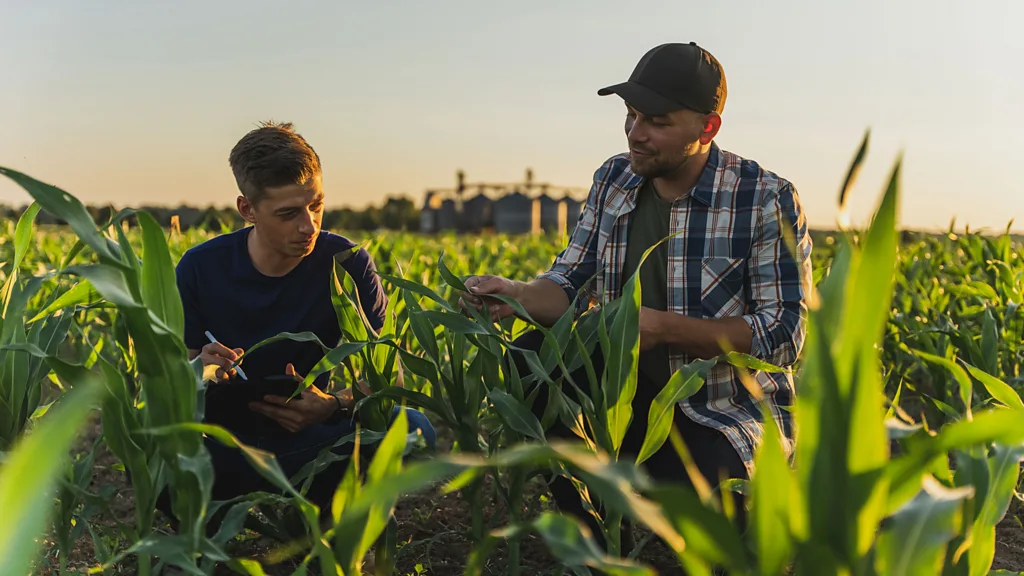Artificial intelligence (AI) is being quickly embraced by American farmers as a vital tool for tackling the problems that face contemporary agriculture. Sophisticated technology integration is turning out to be crucial for managing labor shortages and raising crop yields.
A farmer in the American Midwest takes a picture of a pest on a soybean plant with his smartphone. The AI-powered program quickly determines the pest’s identity and determines how dangerous it is. Although it may appear like a high-tech novelty, this is a significant development for the industry.
The Labor Crisis
There is a severe labor shortage in the US agriculture industry. A declining labor force and an aging farmer population aggravate the issue. The industry faces many obstacles as a result of younger generations choosing less labor-intensive careers and many farmers approaching retirement. The average age of a farmer is currently sixty, according to Emily Buckman, director of government affairs at the American Farm Bureau Federation. Many farms heavily rely on elderly family members or a more expensive and scarce labor pool.
AI’s Growing Role
Although artificial intelligence has long been used in agriculture, recent developments have sped up its adoption. Approximately 87% of US agriculture businesses were using AI technologies in some capacity by the end of 2021. Financial incentives are being provided by the federal government to support this change and encourage the advancement and application of AI throughout the industry.
Global Implications
The effective application of AI in the US may have significant worldwide effects. The need for efficient food production is growing as the world’s population rises and agricultural systems are threatened by climate change. Over $100 billion worth of goods were exported by the US, a major agricultural product exporter, to China, Mexico, Canada, and Europe in just the previous year. By 2050, there will be two billion more people on the planet, so the food industry needs to figure out how to grow 70% more food to keep up with demand.
Addressing Climate Change and Crop Yields
Crop yields are highly vulnerable to climate change, with predictions of sharp declines in productivity. Iowa State University distinguished professor Patrick Schnable emphasizes the dire consequences of a 10–20% drop in corn yields. The AI Institute for Resilient Agriculture at Iowa State University is developing ways to use AI to improve agricultural resilience. Their work aims to increase profitability while utilizing less resources by developing sustainable practices and utilizing robotics, artificial intelligence, and sensing tools.
Innovative AI Applications
Drones and GPS instruments are two of the most popular AI applications in agriculture right now. Currently, drones and GPS tools are among the most common AI applications in agriculture. These technologies help farmers monitor fields and manage resources more effectively. Self-driving tractors, combines, and robots capable of sorting crops and performing other tasks are also becoming more prevalent. These innovations not only address labor shortages but also enhance efficiency by reducing the need for human intervention in repetitive tasks.
Precision Agriculture
Precision agriculture uses AI, which is a crucial tactic for raising productivity and sustainability. Farmers can reduce waste and address issues more accurately by monitoring field conditions with the help of technologies like drones. The director of emerging technologies at John Deere, Sarah Schinckel, highlights how AI is changing farming methods and how its use is growing quickly.
